|
Overview The research interest of our group focuses on the development of new paradigm for understanding the interaction between nanomaterialsand biological systems, and we also have interests in exploiting innovative strategies for utilization of nanomaterialsin biomedical applications. A variety of projects were tackled with multidisciplinary approaches that combine synthetic and material chemistry with molecular, cell, and animal biology, spanning fundamental research, proof of principle demonstrations, and finally, product development. Currently, we put a particular emphasis on the photoelectronicproperties of nanomaterialsrelated to manipulation of biological responses and disease therapeutic effects. |
||
 |
||
|
1. Toxicological effect and safety-by-design of nanomaterials. The toxicological responses of nanomaterialshave been closely correlated to nanomaterials’ physicochemical properties, and establishment of a property-activity relationship of nanomaterialsis favorable for deep understanding the nanomaterials’ toxicity mechanism, prospectively predicting nanomaterials’ potential hazards and rationally design the safer nanomaterials. |
||
|
Overlap of conduction band energy of metal oxide nanoparticleswith biological redoxpotential range can trigger electron transfer from biological system to nanomaterials, causing oxidative injury in cells and animals. (H. Zhang, A. Nel* et al; ACS Nano2012, 6, 4349-4368; H. Zhang, A. Nel*, et al; J. Am. Chem. Soc., 2014, 135, 6406-6420. ) |
||
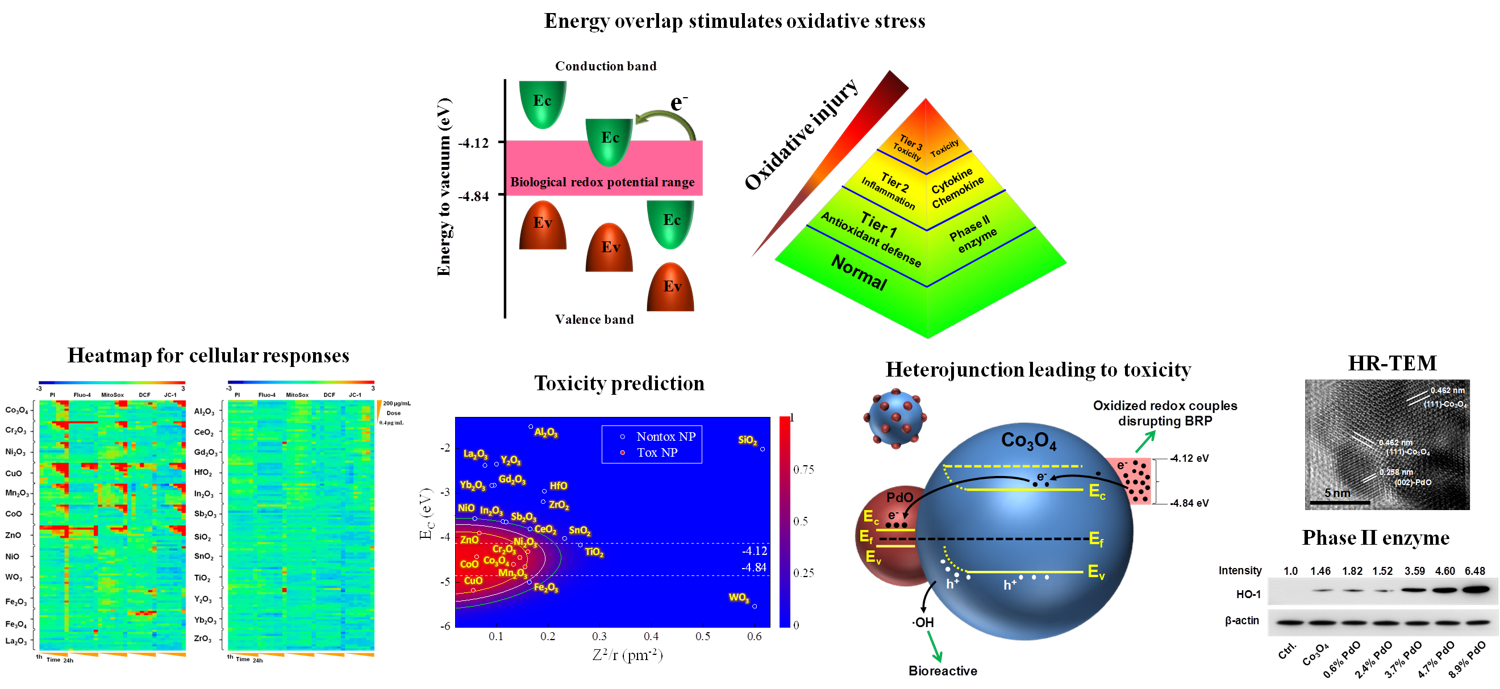 |
||
|
Among silanoland siloxanegroups on the surface of silica nanomaterials, three memberedsiloxanewas determined responsible for sticking to extracellular membrnaeand dramatically breaking the membrane through leasing free radicals. (H. Zhang, C.J. Brinker* et al; J. Am. Chem. Soc., 2012, 134, 15790-15804. ) |
||
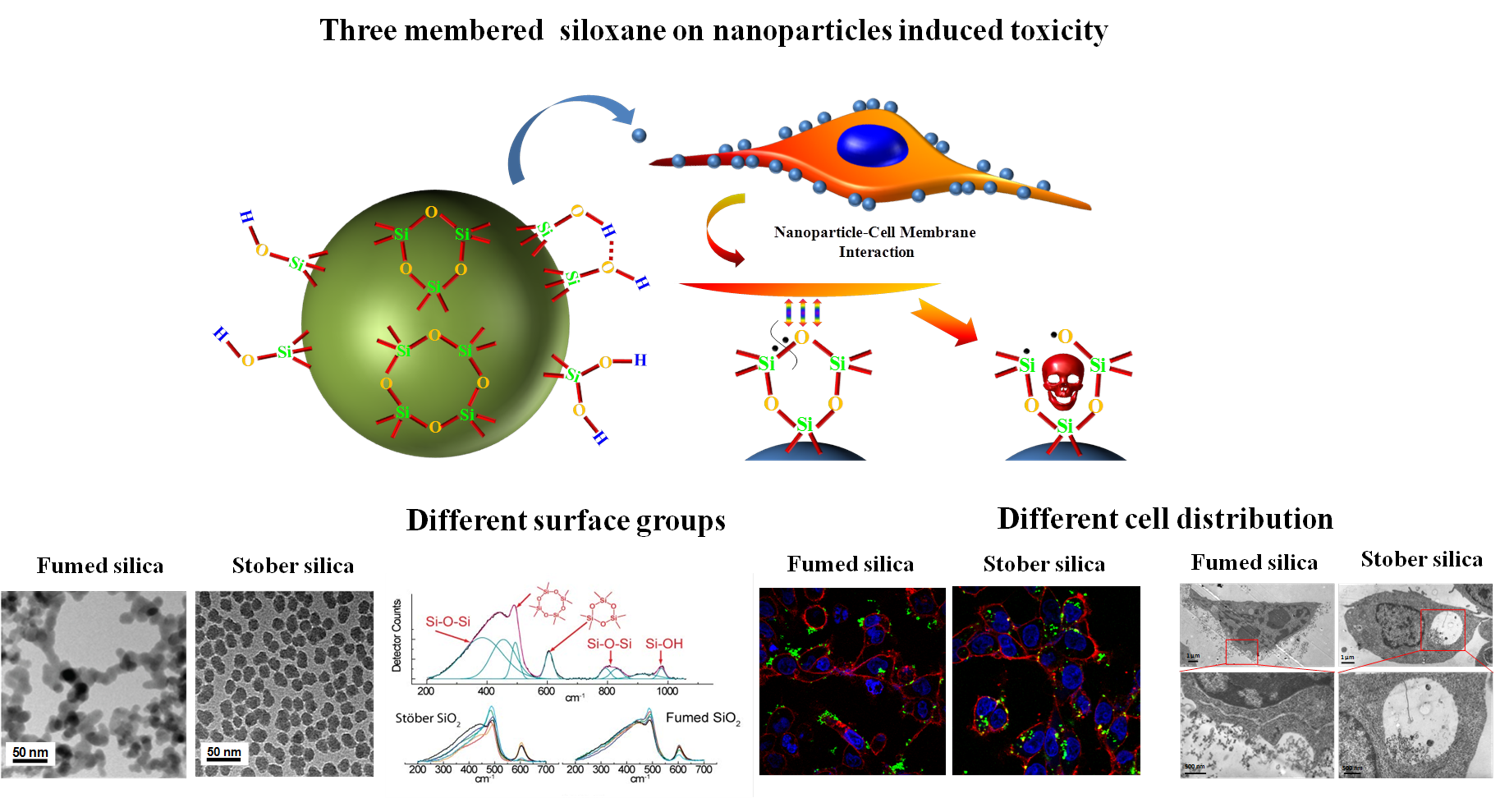 |
||
|
The distinct atomic arrangement on crystallographic planes can result in different surface reactivity, potentially capable of causing different magnetudesof toxicity. (N. Liu, H. Zhang*, et al; ACS Nano, 2016, 10, 6062- 6073; Y. Chang, H. Zhang*, et al; Nanotoxicology2017, 11, 907-922.) |
||
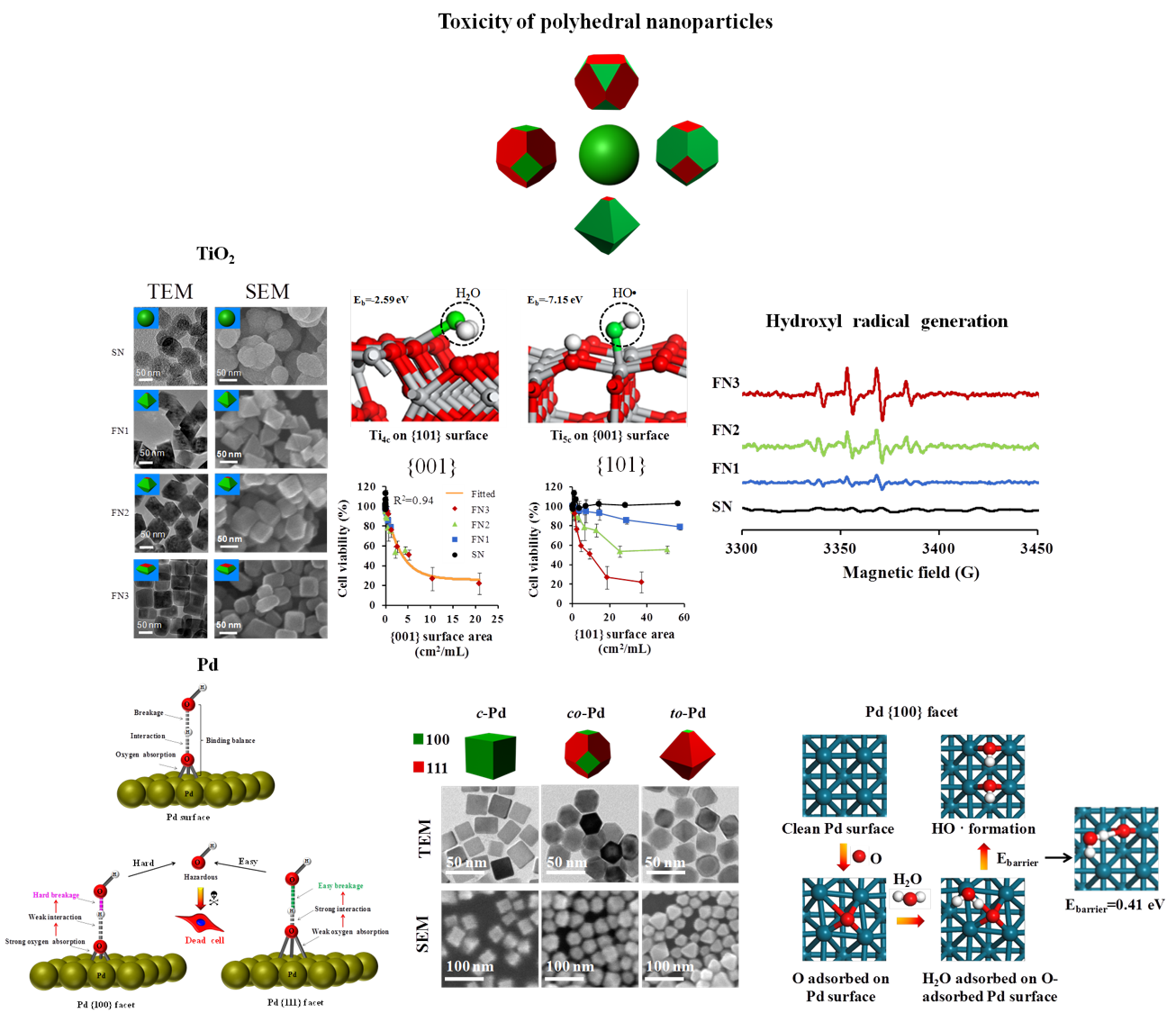 |
||
|
2. Phototherapy of nanomaterials. Photothermal(PTT) and photodynamic therapy (PDT) have attracted considerable attention as non-invasive therapeutic techniques for cancer treatment due to its unique advantages such as remote controllability, improved selectivity, and low systemic toxicity. For PDT, irreversible damage to malignant tumors is realized by reactive oxygen species (ROS) that are generated from the photosensitizer(PS) upon exposure to external incident light. For PTT, a photothermalagent (PTA) is employed for selective local heating of the diseased region to induce a hyperthermiceffect upon light irradiation, which causes denaturationof proteins and disruption to the cytomembrane, thus leading to a destruction of diseased tissue eventually. |
||
| The deep level defects (Bisand Vs) in Bi2S3 nanorodswere found playing a critical role in exhibition of excellent phothermalperformance. After incorporation of gold nanodotsinto Bi2S3 nanorods, the formed B2S3-Au heterojunctionnanorodscould present more potent photothermalperformance, resulting in more significant in vitro and in vivo therapeutic effects for cancer. (Y. Cheng, H. Zhang*, et al; AngewChemIntEd Engl 2018, 57, 246-251.) | ||
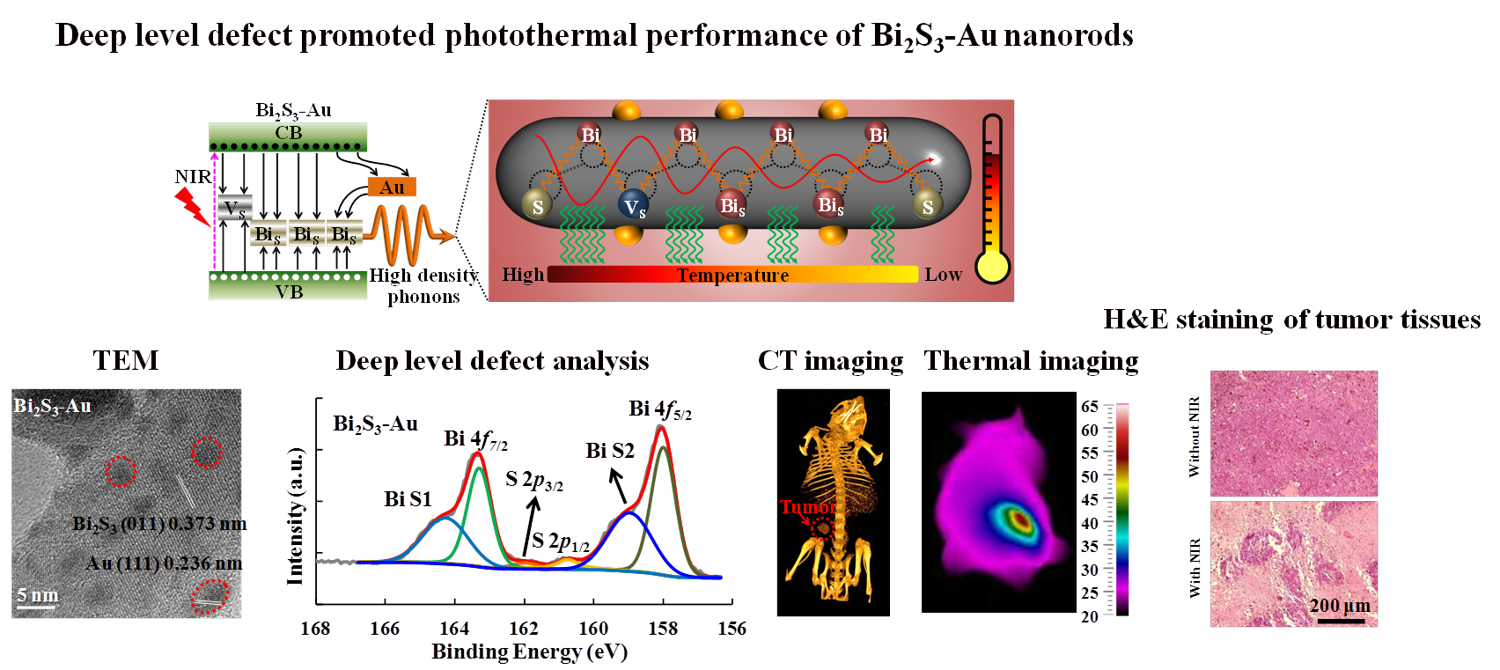 |
||
|
The resonance energy transfer from Au core to CuSshell can significantly enhance the phothermaland photodynamic performance in Au-CuSyolk-shell nanoparticles due to improved d electron transition and hydroxyl radical generation. Inside multiple reflection can prolong the path of light, leading to enhanced light utilization efficiency. (Y. Chang, H. Zhang*, et al; NanoLett. 2018, 18, 886-897.) |
||
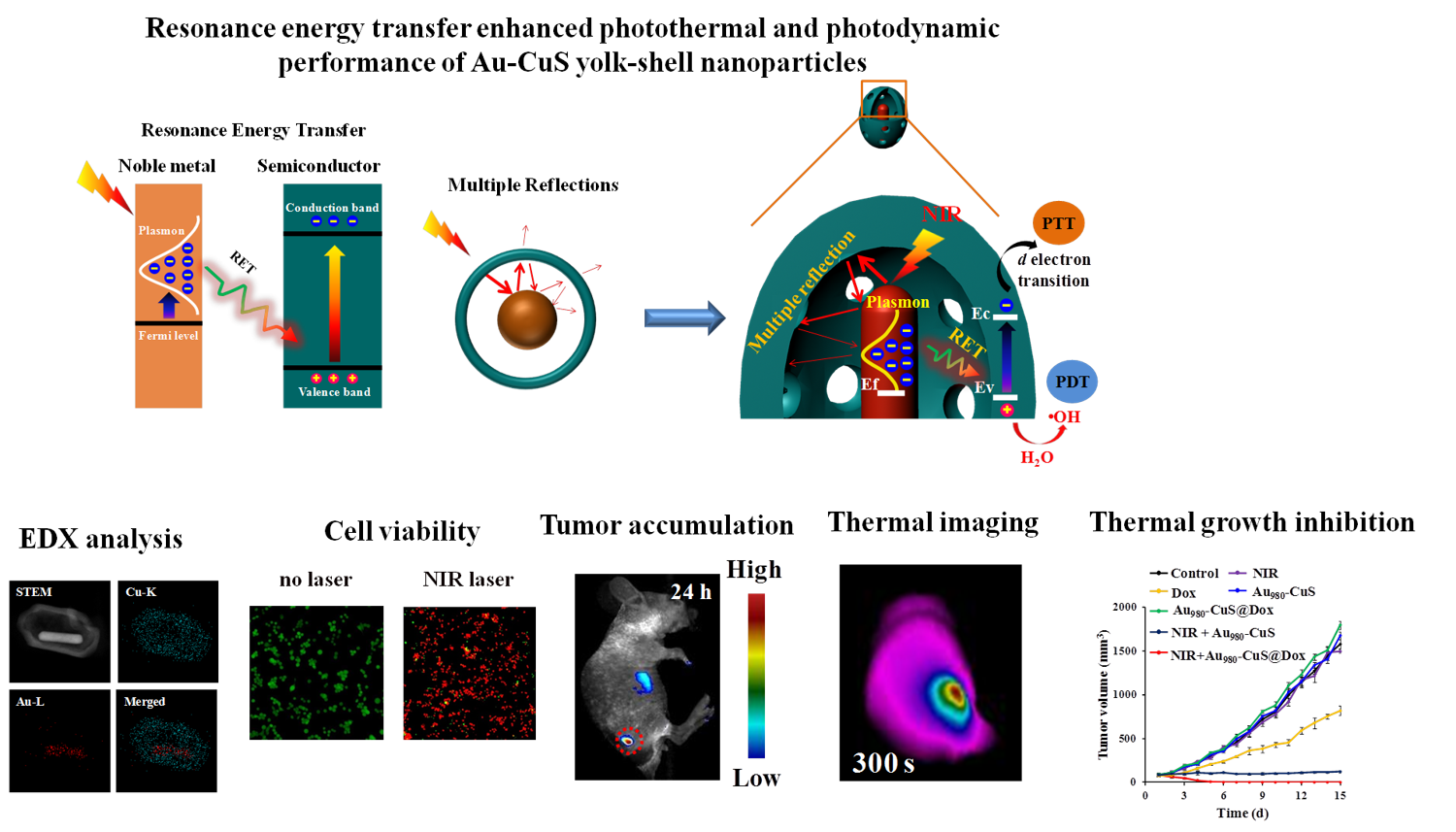 |
||
|
3. Gene screening in three dimensional (3D) cell culture medium. Gene can be loaded onto magnetic nanoparticles for gene screening use in 3D cells that are embeded in hydrogel matrix. External magnetic field can be used to advance the gene transfection efficiency. This technique can be further developed for gene screening in 3D cell chips. (H. Zhang, S. Sharfstein*, ACS Nano, 2010,4,4733-4743; H. Zhang, S. Sharfstein*, Small 2012, 8, 2091-2098.) |
||
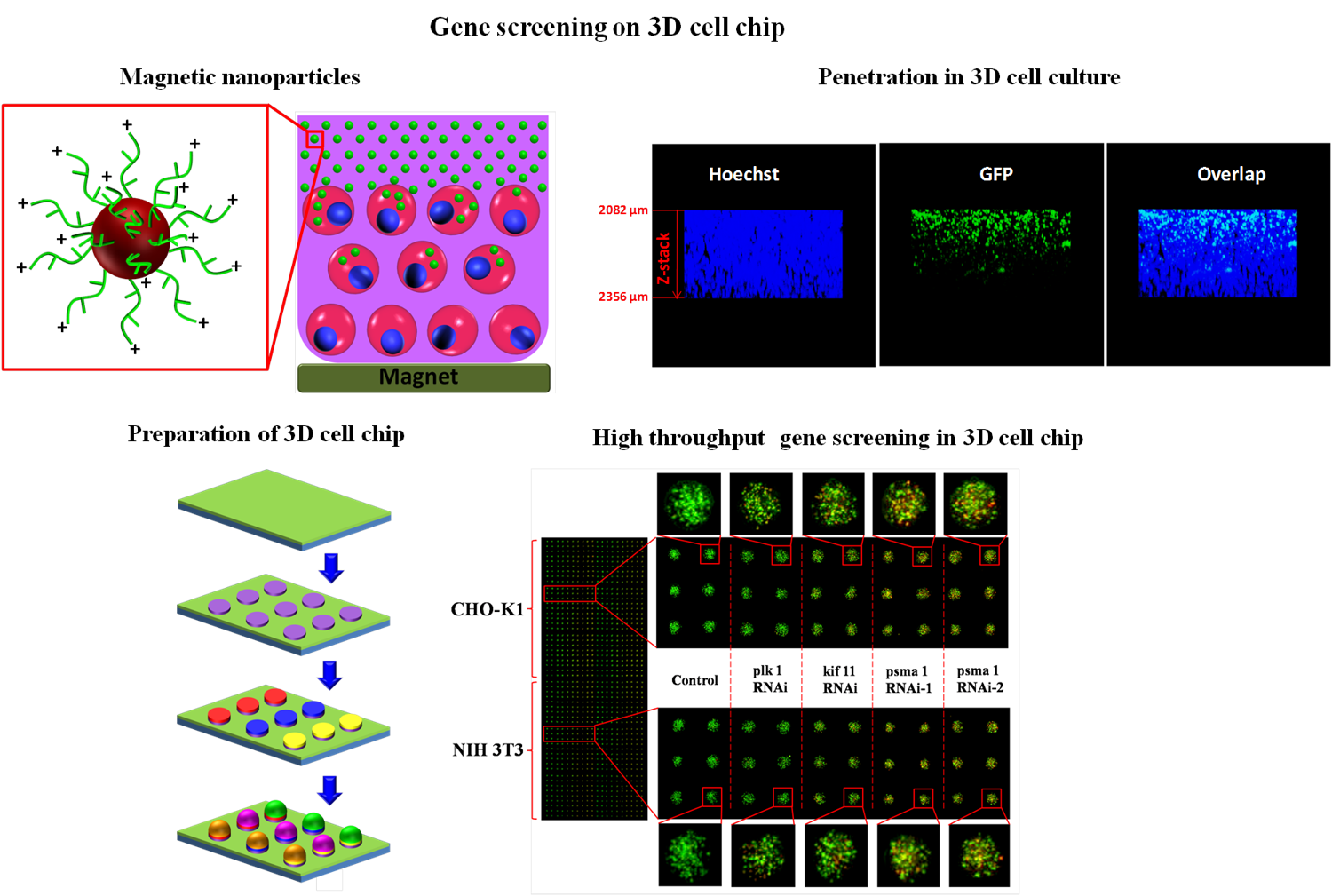 |
||
|
4. Bacteria inactivation and wound healing. |
||
 |
||
|
5. Nanomaterial-mediated stem cell differentiation and tissue engineering. |
Researchpbzhang2020-08-14T18:13:20+08:00